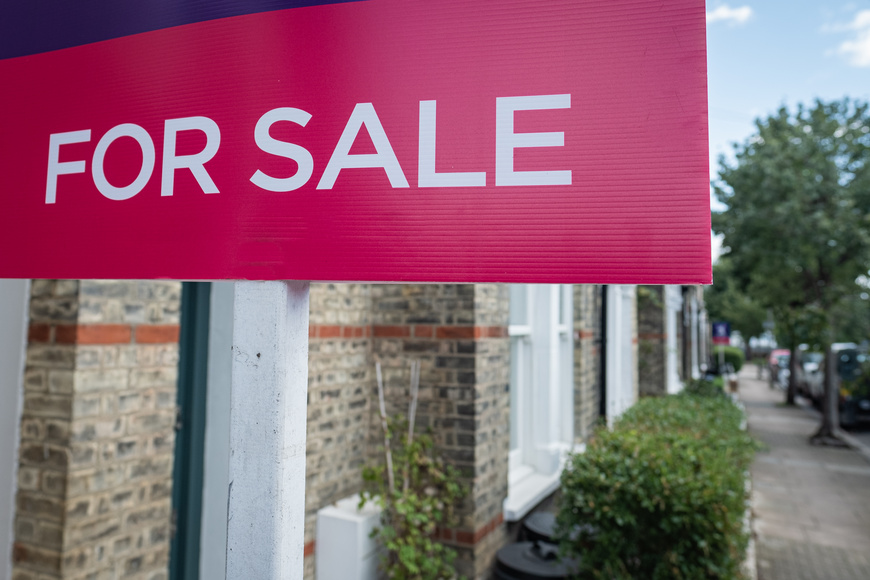On this page
Investors on alert - the cheapest areas for property in the UK Rental market continues to heat up BTL and property flip investors What regions have seen the greatest drop in prices? The cheapest areas to buy property in the UK But investors be warned, be quick as price growth is forecast... Capitalising on investment opportunities & using bridging loans to avoid missing outInvestors on alert - the cheapest areas for property in the UK

Savvy property investors will take a calculated approach to property investment. They typically prioritise investing in locations with increased opportunities for profit from property sales or regions with strong tenant demand and high expected rental yield.
As property prices continue to decline throughout the UK, some areas are seeing costs fall faster than others, providing property investors with new opportunities - but where are the cheapest areas for property in the UK right now?
Recent figures from Nationwide have shown that as of September 2023, prices have fallen by 5.3% annually for two consecutive months and sellers were forced to discount average asking prices by 4.2% last month, the highest level since 2019.
There have been almost 12 consecutive months of declining annual house prices, with the average price at £279,569.
The drop in UK house prices can be primarily attributed to the rising costs associated with securing a mortgage, increased monthly mortgage rates and the financial strain on disposable incomes caused by the cost of living.
With potential buyers less likely to afford a deposit or secure a mortgage, there has been a general lack of demand for the properties available. And with owners' mortgage rates increasing the need and urgency to sell, prices have lowered.
With competition amongst investors set to intensify, bridging loans could be the difference between securing your next investment or missing out.
Rental market continues to heat up
The buy-to-let (BTL) market continues to show sustained activity, with tenant demand consistently surpassing the supply of rental properties in most regions throughout the UK - and investors are looking to seize the opportunity of increased rental demand and lower house prices.
There was notable year-on-year growth in rental prices (+10%), with the average rent reaching £1,278 in the July to September period.
Rents are expected to rise by 25% by 2026 (£1,550 higher a month) due to supply issues and increasing costs - with rents expected to rise 8% in the last quarter of 2023 alone.
77% of letting agents experienced increased tenant demand, with rental properties receiving 25 inquiries. Moreover, 58% of agents noted a rise in the limited availability of properties.
When you're looking to secure a BTL bargain without waiting on the lengthy mortgage process a residential bridging loan can be a helpful short-term finance option. As the rental market continues to heat up, bridging loans remain the ideal financing solution for property investors.
BTL and property flip investors
Traditional buy-to-let remains a popular investment strategy, where investors purchase properties to rent out to tenants. Given the current demand for rental properties and the potential for rental yield growth, this strategy may appeal to investors looking for income and long-term capital growth.
Property flipping is another investment strategy that investors may look to pursue. This strategy involves buying a property to renovate or improve it quickly and then selling it at a higher price, typically within a short timeframe.
Investors should look to take advantage of these low prices and benefit from capital appreciation once property prices increase.
What regions have seen the greatest drop in prices?
House prices across the country have fallen in the past year, with the South, London, and Wales experiencing the most significant annual declines.
| Region | Annual Price Drop (2022-2023) | Average Price |
| South East | 5% | £379,565 |
| Wales | 4.7% | £212,967 |
| London | 4.1% | £529,814 |
| North East | 1.2% | £167,249 |
| Scotland | 0.6% | £201,932 |
Source: Halifax Price Index, 2023
In contrast, Scotland had the slowest decline in the UK, with prices falling by just 0.6% over the last year. The North East also saw a decrease of 1.2%, with average house prices at £167,249.
Location-based pricing is not the only aspect investors should consider; investors looking to flip property or invest in BTL properties should consider the premium a property sells at when situated next to a key transport link.
Did you know? As of 2023, properties near the top 20 UK stations increase the average property price by 122%.
The cheapest areas to buy property in the UK
But where are the biggest opportunities for house property investment bargains? Where in the UK have house prices fallen the most, and where should property investors be checking out and getting ahead of the competition?
Here are some of the cheapest areas in the UK…
East Ayrshire, Scotland (Average Price: £101,500)
Ayrshire is situated along the Firth of Clyde coastline and has a population of around 365,300. Ayrshire features several towns that offer views across the water towards Arran and Ailsa Craig. The county's coastal location also makes it the residence of some of Scotland's most picturesque beaches.
East Ayrshire has an average property price of £101,500, one of the lowest prices in the UK. East Ayrshire also has a high rental yield of 8.58%, providing a prime opportunity for investors.
Inverclyde, Scotland (Average Price: £103,700)
Situated along the west coast of Scotland, with an estimated population of 81,540, Inverclyde provides access to stunning landscapes and affordable housing options.
In a 2006 survey, this region was selected as one of Scotland's top four investment destinations, and it's currently undergoing significant revitalisation - with investment in schools, retail, and housing.
West Dunbartonshire, Scotland (Average Price: £109,200)
West Dunbartonshire is located west of Glasgow and has a population of around 90,000. It offers a mix of urban and rural living, with its proximity to Glasgow making it a convenient option for commuters.
Hartlepool, North East (Average Price: £112,800)
Hartlepool is a town in County Durham, North East England, known for its maritime heritage and scenic coastal areas - has a population of around 92,300.
Hartlepool is an expanding town with diverse housing options, including seaside apartments, country cottages, and newly built estates like Hartwell Park, Hartside View, and Marine Point.
Hull, North East (Average Price: £113,200)
Hull, also known as Kingston upon Hull, is located in the North East of England and has a population of around 267,014. Hull was named the 'City of Culture' in 2017, which attracted £220 million in investment and 800 new jobs.
Middlesbrough, North East (Average Price: £114,200)
Middlesbrough offers promising investment opportunities for investors seeking high yields (8.16% gross rental yield).
Thanks to its affordability, strong rental demand, and vibrant community and culture, it's gaining popularity among property investors aiming for substantial returns.
Burnley, Lancashire (Average Price: £117,900)
In the North West of England, Burnley has competitive property prices, with rental yields of around 8.11%. Its proximity to cities like Manchester and Leeds presents an appealing opportunity for property investment.
But investors be warned, be quick as price growth is forecast...
There may be a limited window of opportunity for investors; the five-year forecast by Knight Frank predicts that following initial declines in 2023 and 2024. House prices are anticipated to rebound in 2025, with projected increases of 2.5%, 3%, and 3% over the next three years.
Capitalising on investment opportunities & using bridging loans to avoid missing out
These locations where prices are the cheapest or have significantly fallen present enticing investment opportunities.
However, with increased properties available at lower prices, investors will have increased competition and therefore encounter a significant challenge: securing financing quickly. Traditional mortgages tend to involve lengthy approval processes, which can impact the ability to seize opportunities.
One of the real advantages of bridging loans is that, in many cases, they’re incredibly quick to arrange. They're possibly the quickest form of short-term finance for large sums that you can access in the UK.
From initial enquiry to receiving the finance in your account, the average time frame for a bridging loan to complete is two to four weeks. In urgent scenarios, however, we can complete bridging loans in a matter of hours.
Here are some key points to consider regarding bridging loans:
Speed and Flexibility: One of the primary advantages of bridging loans is their speed. Traditional mortgages often involve time-consuming approval processes, including credit checks, property valuations, and extensive paperwork.
In contrast, bridging loans are known for their quick approval and fast access to funds, allowing investors to act swiftly when identifying a property they want to purchase.
Short-Term Solution: Bridging loans are intended as short-term financing options. They are typically used for a few months to a couple of years.
Property Valuation: Lenders providing bridging loans will still require a property valuation to assess the security for the loan. This is essential to determine the loan-to-value ratio and the amount they are willing to lend.
Exit Strategy: Having a clear exit strategy is essential. Investors should know how they plan to repay the bridging loan at the end of the term. This might involve refinancing with a traditional mortgage, selling the property, or other means of securing long-term financing.
The UK property market offers numerous opportunities for investors seeking affordability and potential for growth. By targeting areas with lower prices and bigger opportunities by utilising bridging loans, investors can capitalise on these opportunities and take decisive steps towards building a profitable property portfolio.





